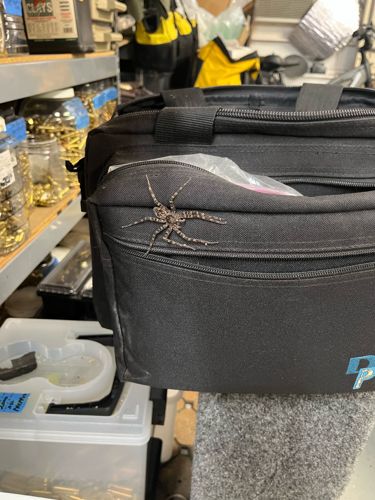Fishing Spider or Dolomedes Spider
Scientific Name: Dolomedes sp.
Order & Family: Araneae, Pisauridae
Size: Leg spans can range from 2.5 to 10 cm (1 to 4 inches), with body lengths from 1.5 to 3 cm (0.6 to 1.2 inches) for females, and slightly smaller for males.

Natural Habitat
Typically found near water bodies like ponds, lakes, streams, and swamps, but can also be found in damp areas far from water, including basements, sheds, and damp woodpiles.
Diet & Feeding
Primarily carnivorous, feeding on insects, small fish, tadpoles, and other small aquatic creatures. They hunt on the surface of the water or ambush prey from vegetation.
Behavior Patterns
Fishing spiders are semi-aquatic and do not build webs for catching prey. Instead, they are active hunters, often resting on vegetation or rocks near water with their front legs extended to detect vibrations on the water's surface. They can walk on water, dive beneath it, and even breathe underwater using air trapped on their hairy bodies.
Risks & Benefits
Fishing spiders are not considered dangerous to humans. While they can bite if provoked, their venom is not medically significant, usually causing only mild pain, redness, or swelling. They are beneficial for controlling insect populations, including mosquitoes, and are part of the aquatic food web.
Identified on: 10/2/2025